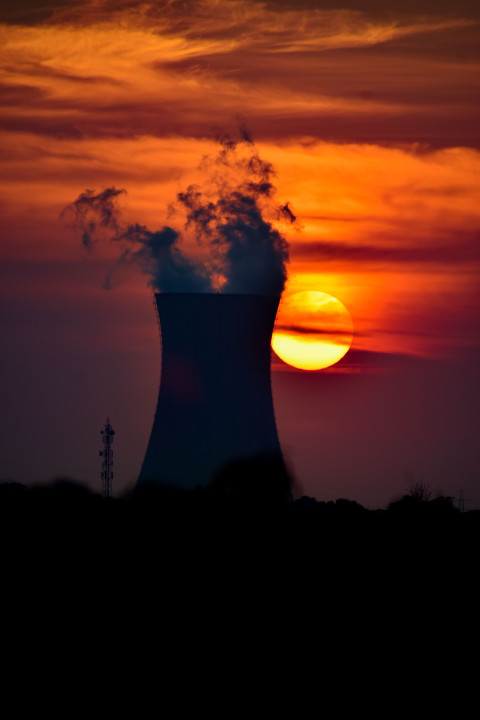When solving the biggest problems of today, such as climate change, mathematics is not necessarily the first thing on anyone’s mind. However, as a universal methodological science, it lies at the heart of understanding the world. Mathematics creates a kind of a structure for the world, which makes it possible to examine it by means of science.
"You can think of mathematics as a kind of universal hammer that can be used to strike at any problem. Different types of mathematics play their own role in the design and use of the hammer. While theoretical mathematics develops and improves the hammer, applied mathematics swings it," says Tapio Helin, Professor of Applied Mathematics at LUT.
According to Helin, applied mathematics demonstrates well the universality of mathematics. An applied mathematician may end up working with professionals from very different fields while his own work doesn’t change. Because in the end mathematics is always mathematics.
At LUT University, applied mathematics is one of the core areas of computational engineering. The team is also part of the Centre of Excellence of Inverse Modelling and Imaging and the new FAME – Flagship of Advanced Mathematics for Sensing, Imaging and Modelling, which are both funded by the Research Council of Finland.
Mathematics at the heart of nuclear safety
Energy production is responsible for the majority of greenhouse gas emissions in the EU and globally. Thus, there is a huge need for emission-free and low-emission energy production. This has strengthened the role of nuclear power.
With nuclear power, energy can be produced almost completely without emissions. However, due to radiation, it has other harmful effects on the environment and on human beings. Spent nuclear fuel is one of the most hazardous man-made wastes. It’s classified as high-level nuclear waste, and there is no permanent disposal repository for it yet. However, one is under construction in Loviisa, Finland.
Before sealing spent nuclear fuel at its disposal repository, it’s important to know exactly how much it radiates. This way it can be estimated how much spent fuel can be put into the repository.
"Spent nuclear fuel resembles a pile of metal rods that have been bundled together and stored in water. Their radioactive radiation is intense, and its activity should be known precisely before disposal. We aim to develop a measurement technique and algorithm that allows activity to be measured remotely by measuring the radiation of an entire bundle," explains Tapio Helin.
The measuring of spent nuclear fuel is important not only for nuclear safety, but also for international security and geopolitics. The fuel is moved from one country to another by the International Atomic Energy Agency (IAEA). In some situations, the IAEA must reliably ensure that a transportation contains an agreed amount of fuel. This can only be confirmed by measuring the radiation of the cargo.
"The result of measuring must be absolutely reliable so that no false accusations are made. This challenges and places responsibility on the mathematics used in the algorithm," Helin says.

Gazing at the birth of the first planets
The world's largest optical telescope, the Extremely Large Telescope (ELT), is currently under construction in Chile's Atacama Desert. Tapio Helin's research group has participated in work led by the European Southern Observatory (ESO) to develop adaptive optics and related algorithms for the telescope.
Adaptive optics are used to correct the effect the atmosphere has on the image produced by the telescope. Atmospheric turbulence causes light from space to crease, blurring the image transmitted by the telescope.
"We are involved in developing an algorithm to calculate the effect of the atmosphere on the image, process the data and correct the position of the telescope mirrors.
"We are involved in developing an algorithm with the purpose to calculate the effect of the atmosphere on the image within every millisecond, process the resulting data and use it to correct the position of the telescope mirrors. The amount of data to process is enormous. Just a bit over ten years ago, it was doubted whether there exists a powerful enough processor to perform the calculation. Fortunately, thanks to the development of algorithms and technology, this problem has been confirmed unnecessary," Helin says.
The ELT is expected to be completed by 2028. Its main purpose will be to search space for exoplanets, i.e. planets that lie outside our solar system, and to look at the past of our universe all the way to the birth of the first planets. It’s hoped that the ELT will tell us what has happened since our universe came into being.
Without mathematics, this would be impossible.

Improving the accuracy of weather forecasts
Flash floods in Central Europe and extreme heat along the Mediterranean coast. With climate change, various extreme weather events are becoming more common placing demands on the accuracy of weather forecasts. The better the weather can be predicted, the better we can prepare for it can.
Lassi Roininen, Professor of Applied Mathematics at LUT, works in several projects that focus on improving the accuracy of weather forecasts. For example, in a project carried out in cooperation with the German Weather Service, Roininen is involved in calculating the margins of error in weather satellite imaging and their impact on weather forecasts.
"In addition to satellites, data comes from a variety of sources, such as sensors on the ground, radiosondes and ships. We want to model what kind of error this data may contain," Roininen says.
Mathematics is also used to test and verify the functionality of algorithms and calculation methods originally developed for weather forecasting.
"This is right at the heart of weather forecasting. The methods we develop must be suitable for practical weather forecasting. This means they have to be mathematically valid and light and quick enough to use."
Estimating the climate change in the upper atmosphere
In the climate reports of the Intergovernmental Panel on Climate Change (IPCC), the effects of climate change on the upper atmosphere have traditionally been marked as highly uncertain. This is not because we know that there are no effects, but because we do not know enough about the effects. In general, scientists do not yet fully know how the upper atmosphere works.
Lassi Roininen has participated in studying the upper atmosphere, i.e. ionosphere, with topography and radar measurements in the international Eiscat project. The project examines, for example, chemical reactions in the upper atmosphere and calculates the impact of different layers of the atmosphere on each other and on the intensity of climate change.
"One might say that the effects don't matter if they are very uncertain. But it is important to study them precisely because of the uncertainty. We don't want to end up in a situation where we only find the impacts significant when it's too late," says Roininen.
More information:

Tapio Helin






